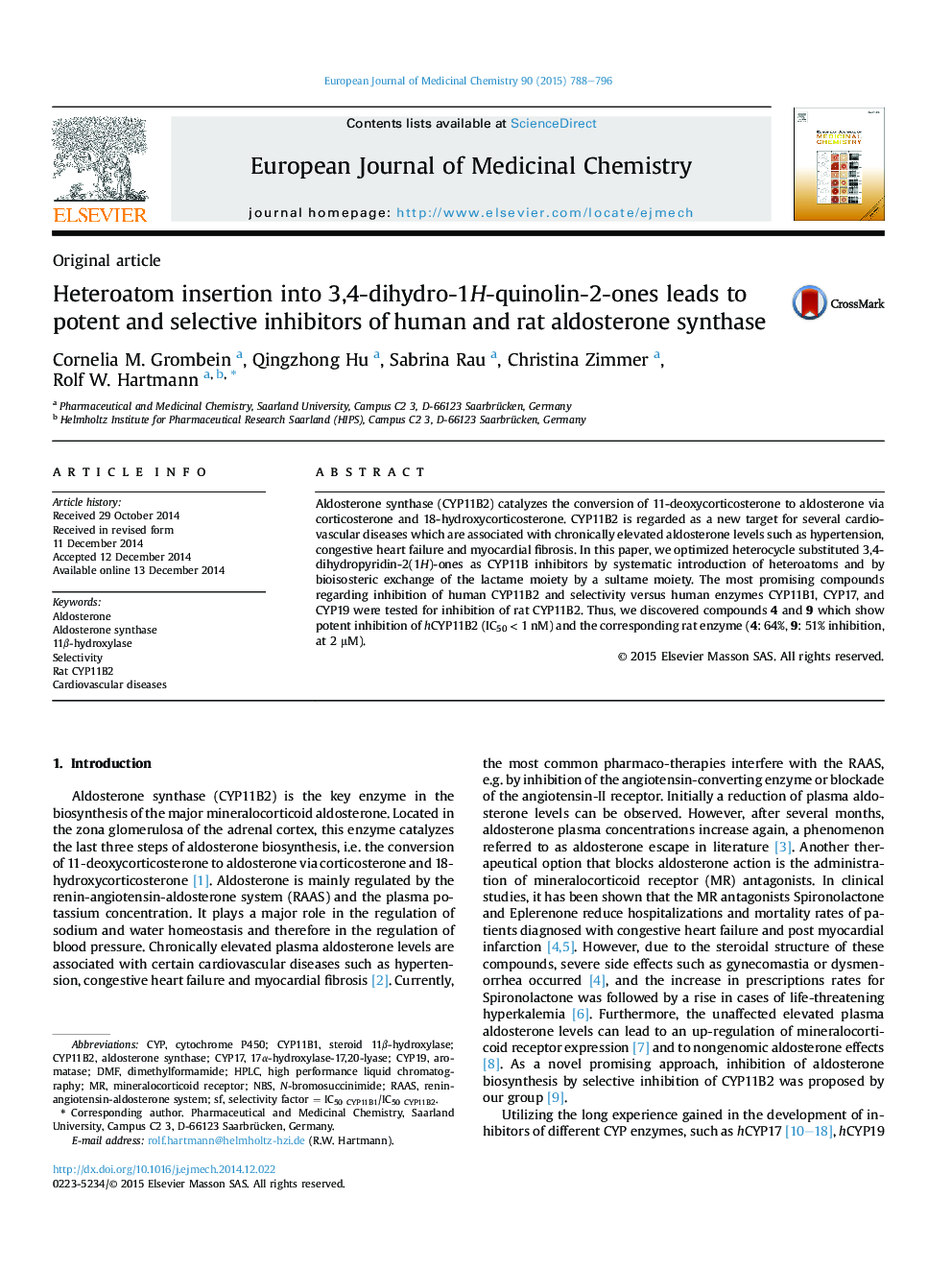| Article ID | Journal | Published Year | Pages | File Type |
|---|---|---|---|---|
| 1395522 | European Journal of Medicinal Chemistry | 2015 | 9 Pages |
•Inhibition of aldosterone synthase is a superior treatment of cardiovascular diseases.•Heteroatoms were inserted into 3,4-dihydro-1H-quinolin-2-one core for further optimization.•Yielded compounds are potent inhibitors of both human and rat aldosterone synthase.•High selectivity over human CYP11B1, CYP17 and CYP19 were achieved.
Aldosterone synthase (CYP11B2) catalyzes the conversion of 11-deoxycorticosterone to aldosterone via corticosterone and 18-hydroxycorticosterone. CYP11B2 is regarded as a new target for several cardiovascular diseases which are associated with chronically elevated aldosterone levels such as hypertension, congestive heart failure and myocardial fibrosis. In this paper, we optimized heterocycle substituted 3,4-dihydropyridin-2(1H)-ones as CYP11B inhibitors by systematic introduction of heteroatoms and by bioisosteric exchange of the lactame moiety by a sultame moiety. The most promising compounds regarding inhibition of human CYP11B2 and selectivity versus human enzymes CYP11B1, CYP17, and CYP19 were tested for inhibition of rat CYP11B2. Thus, we discovered compounds 4 and 9 which show potent inhibition of hCYP11B2 (IC50 < 1 nM) and the corresponding rat enzyme (4: 64%, 9: 51% inhibition, at 2 μM).
Graphical abstractFigure optionsDownload full-size imageDownload as PowerPoint slide
